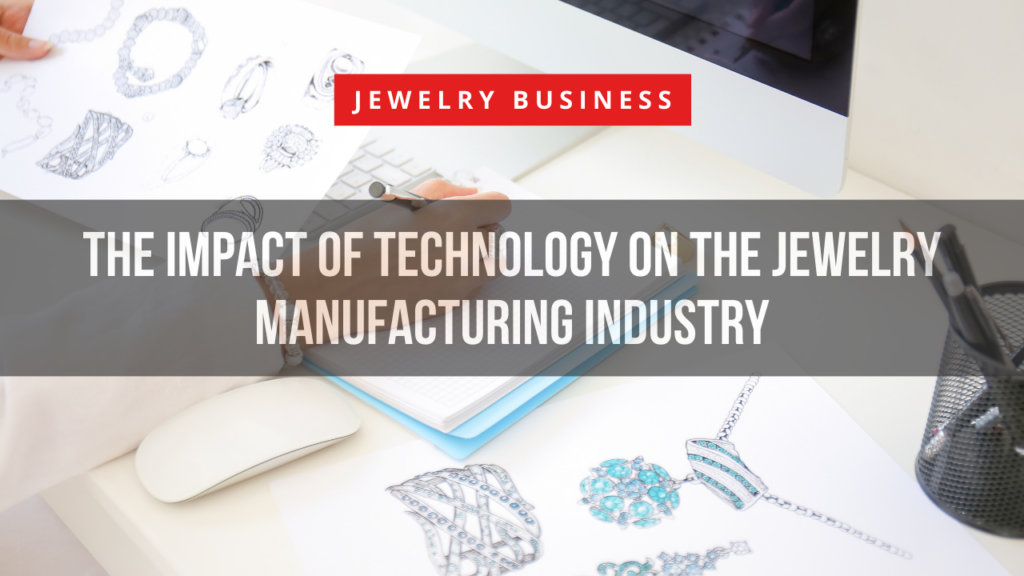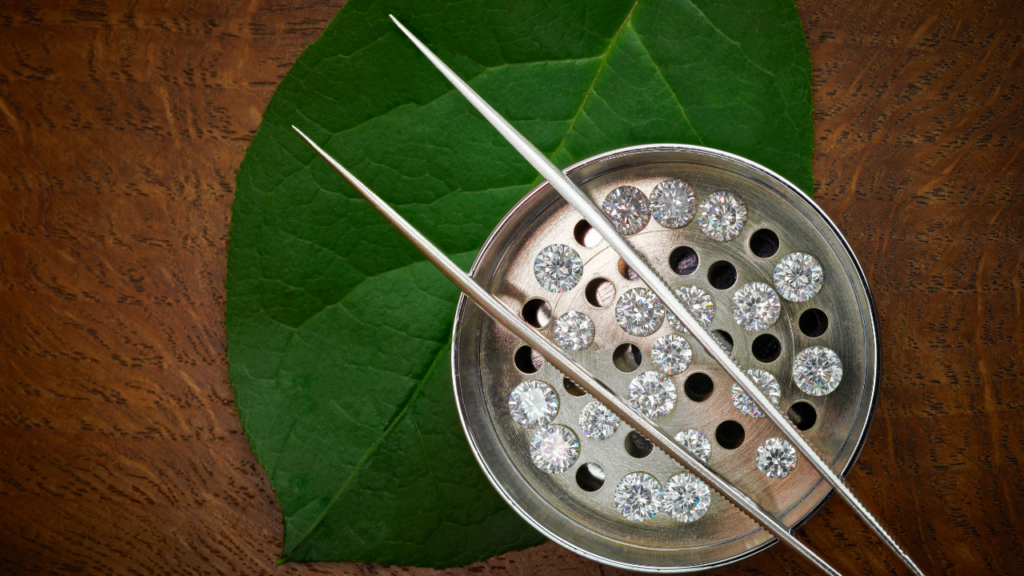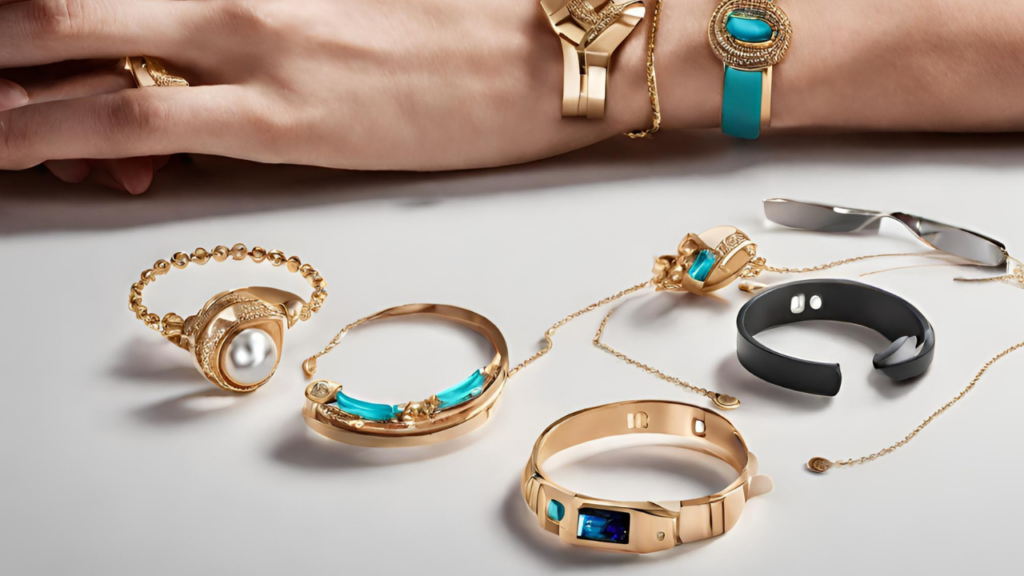
Jewelry manufacturing creates jewelry pieces from raw materials, such as precious metals, gemstones, and pearls. It involves various steps, including design, casting, molding, polishing, and setting.
What are the different types of jewelry manufacturing processes?
There are two main types of jewelry manufacturing processes: traditional and modern.
- Traditional jewelry manufacturing is a labor-intensive process that requires skilled artisans to create each piece by hand. This process is often used to make high-end jewelry pieces with intricate designs.
- Modern jewelry manufacturing uses technology to automate many steps in the jewelry manufacturing process. This makes it possible to produce jewelry more efficiently and at a lower cost.
How has technology impacted the jewelry manufacturing industry over the years?
Technology has had a significant impact on the jewelry manufacturing industry in recent years. New technologies have been developed to improve the design, manufacturing, and marketing of jewelry.
Design
Computer-aided design (CAD) software is now widely used by jewelry designers to create 3D models of their designs. This software allows designers to create complex and detailed designs that would be difficult or impossible to create by hand.
Manufacturing
3D printing is another technology that is revolutionizing the jewelry manufacturing industry. 3D printers can be used to create jewelry pieces directly from CAD models. This eliminates the need for traditional casting and molding processes, which can be time-consuming and expensive.
Marketing
Jewelry manufacturers are also using technology to market and sell their products. For example, many jewelry manufacturers now have online stores where customers can browse and purchase their products. Additionally, social media platforms such as Instagram and Facebook are being used by jewelry manufacturers to reach potential customers and promote their products.
Overall, technology has had a positive impact on the jewelry manufacturing industry. It has enabled jewelry manufacturers to produce high-quality jewelry more efficiently and at a lower cost. It has also made it easier for jewelry manufacturers to reach and sell their products to customers.

The Impact of Technology on Jewelry Design
Computer-aided design (CAD) software
Computer-aided design (CAD) software has had a significant impact on jewelry design. CAD software allows jewelry designers to create 3D models of their designs on a computer screen. This software offers a number of advantages over traditional hand-sketching methods, including:
- Greater accuracy: CAD software allows jewelry designers to create precise and accurate 3D models of their designs. This can help to identify and avoid potential problems with the design before it is produced.
- Greater flexibility: CAD software allows jewelry designers to easily experiment with different designs and make changes quickly and easily. This can help to speed up the design process and result in more innovative and creative designs.
- Improved communication: CAD software allows jewelry designers to share their designs with other people, such as clients, manufacturers, and other designers. This can help to improve communication and collaboration throughout the design process.
3D printing
3D printing is another technology that is revolutionizing jewelry design. 3D printers can be used to create jewelry pieces directly from CAD models. This eliminates the need for traditional casting and molding processes, which can be time-consuming and expensive.
3D printing offers a number of advantages for jewelry designers, including:
- Greater freedom of design: 3D printing allows jewelry designers to create jewelry pieces with complex or intricate designs that would be difficult or impossible to create using traditional methods.
- Faster production times: 3D printing can create jewelry pieces quickly and easily. This can help to reduce the time it takes to bring a new design to market.
- Lower production costs: 3D printing can produce jewelry pieces at a lower cost than traditional methods. This can make jewelry more affordable for consumers.
Laser cutting and engraving
Jewelry designers also use laser cutting and engraving machines to create unique and stylish pieces. Laser cutting can be used to cut jewelry pieces from raw materials, while laser engraving can be used to add intricate designs or personalizations to jewelry pieces.
Laser cutting and engraving offer a number of advantages for jewelry designers, including:
- Precision: Laser cutting and engraving machines can cut and engrave jewelry pieces with high precision. This is essential for creating jewelry with complex or intricate designs.
- Versatility: Laser cutting and engraving machines can be used to cut and engrave a variety of materials, including precious metals, gemstones, and pearls. This makes them ideal for creating a wide range of jewelry pieces.
- Efficiency: Laser cutting and engraving machines can cut and engrave jewelry pieces quickly and easily. This can help to reduce the time it takes to produce jewelry pieces.

The Impact of Technology on Jewelry Manufacturing Processes
CNC machining
CNC machining is a computer-controlled manufacturing process that is used to create jewelry pieces from raw materials. CNC machining machines are programmed to follow a set of instructions, which allows them to create jewelry pieces with precise dimensions and complex designs.
CNC machining offers a number of advantages for jewelry manufacturers, including:
- Greater accuracy: CNC machining machines can create jewelry pieces with high accuracy. This is essential for creating jewelry pieces with precise dimensions and complex designs.
- Greater consistency: CNC machining machines can create jewelry pieces with a high degree of consistency. This means that all of the jewelry pieces in a batch will be identical.
- Faster production times: CNC machining machines can create jewelry pieces quickly and easily. This can help to reduce the time it takes to produce jewelry pieces and meet customer demand.
- Reduced labor costs: CNC machining machines can automate many of the steps in the jewelry manufacturing process. This can help to reduce labor costs and improve profitability.
Electroless plating
Electroless plating is a process that is used to coat jewelry pieces with a thin layer of metal. Electroless plating can be used to improve the durability, appearance, and corrosion resistance of jewelry pieces.
Electroless plating offers a number of advantages for jewelry manufacturers, including:
- Uniform coverage: Electroless plating can be used to coat jewelry pieces with a uniform layer of metal, even in areas that are difficult to reach.
- Greater durability: The metal coating applied by electroless plating can help to improve the durability of jewelry pieces and protect them from wear and tear.
- Improved appearance: Electroless plating can improve the appearance of jewelry pieces by giving them a bright and shiny finish.
- Corrosion resistance: Electroless plating can improve the corrosion resistance of jewelry pieces, making them less susceptible to tarnishing and other forms of corrosion.
Casting and molding
Casting and molding are traditional jewelry manufacturing processes that are still used today. These processes often create jewelry pieces with complex or intricate designs.
Casting is a process in which molten metal is poured into a mold. The mold is then cooled, and the metal is removed. Molding is when a molten plastic or rubber material is poured into a mold. The mold is then cooled, and the plastic or rubber material is removed.
Casting and molding offer several advantages for jewelry manufacturers, including:
- Versatility: Casting and molding can be used to create jewelry pieces from various materials, including precious metals, gemstones, and pearls.
- Complexity: Casting and molding can create jewelry pieces with complex or intricate designs.
- Accuracy: Casting and molding can be used to create jewelry pieces with high accuracy.
- Consistency: Casting and molding can be used to create jewelry pieces with a high degree of consistency.

The Impact of Technology on Jewelry Quality and Efficiency
Improved quality control
Technology is helping jewelry manufacturers to improve quality control in a number of ways. For example, computer-aided design (CAD) software can be used to create 3D models of jewelry pieces before they are produced. This allows manufacturers to identify and address potential problems with the design before it is too late.
Additionally, optical inspection machines can be used to inspect jewelry pieces for defects after they have been produced. These machines use high-resolution cameras to scan jewelry pieces for imperfections. This can help manufacturers to identify and remove defective jewelry pieces before they are shipped to customers.
Reduced production costs
Technology is also helping jewelry manufacturers to reduce production costs. For example, CNC machining can be used to automate many of the steps in the jewelry manufacturing process. This can help to reduce the need for labor and reduce production costs.
Additionally, 3D printing can be used to create jewelry prototypes and finished products. This can eliminate the need for traditional casting and molding processes, which can be time-consuming and expensive.
Increased productivity
Technology is also helping jewelry manufacturers to increase productivity. For example, CNC machining machines can operate 24/7 without breaks. This can help manufacturers to produce more jewelry pieces in a shorter amount of time.
Additionally, 3D printing can create jewelry pieces more quickly than traditional casting and molding processes. This can help manufacturers to reduce lead times and meet customer demand more quickly.
Examples
Here are some examples of how jewelry manufacturers are using technology to improve quality control, reduce production costs, and increase productivity:
A jewelry manufacturer that produces high-volume jewelry pieces such as wedding rings and engagement rings can use CNC machining to produce jewelry pieces quickly and efficiently. This can help the manufacturer to reduce production costs and increase productivity.
A jewelry manufacturer that produces jewelry pieces with complex or intricate designs can use 3D printing to create prototypes of the jewelry pieces before they are made. This can help the manufacturer identify and address potential problems with the design before it is too late.
A jewelry manufacturer that uses optical inspection machines to inspect jewelry pieces for defects after they have been produced. This can help the manufacturer identify and remove defective jewelry pieces before they are shipped to customers.
Overall, technology is helping jewelry manufacturers to improve jewelry quality, reduce production costs, and increase productivity. This is benefiting both jewelry manufacturers and consumers.

The Future of Technology in the Jewelry Manufacturing Industry
Artificial intelligence (AI)
Artificial intelligence (AI) is a rapidly developing field that has the potential to revolutionize the jewelry manufacturing industry. AI can be used to automate many of the tasks involved in jewelry manufacturing, such as design, production, and quality control.
For example, AI can create design algorithms that can generate new jewelry designs based on existing trends and customer preferences. AI can also automate the production process by controlling CNC machining machines and other manufacturing equipment. Additionally, AI can be used to inspect jewelry pieces for defects and ensure that they meet quality standards.
Robotics
Robotics is another technology that is having a significant impact on the jewelry manufacturing industry. Robots can be used to perform a variety of tasks, such as welding, polishing, and setting gemstones.
Robots offer a number of advantages for jewelry manufacturers, including:
- Accuracy: Robots can perform tasks with a high degree of accuracy. This is essential for creating jewelry pieces with precise dimensions and complex designs.
- Consistency: Robots can perform tasks with a high degree of consistency. This means that all of the jewelry pieces in a batch will be identical.
- Speed: Robots can perform tasks quickly and easily. This can help to reduce production times and meet customer demand.
- Safety: Robots can be used to perform dangerous or repetitive tasks, which can help to improve safety in the workplace.
The Internet of Things (IoT)
The Internet of Things (IoT) is a network of physical objects that are connected to the internet and can collect and exchange data. IoT devices can be used to collect data on the jewelry manufacturing process, such as temperature, humidity, and machine performance. This data can then be used to improve the quality and efficiency of the jewelry manufacturing process.
For example, IoT devices can be used to monitor the temperature of the molten metal in a casting furnace. This data can then be used to ensure that the metal is poured at the correct temperature, which will help to improve the quality of the cast jewelry pieces.
Conclusion
In conclusion, technology is having a significant impact on the jewelry manufacturing industry. New technologies such as CAD software, 3D printing, CNC machining, electroless plating, artificial intelligence (AI), robotics, and the Internet of Things (IoT) are being used by jewelry manufacturers to improve the quality, efficiency, and safety of the jewelry manufacturing process.
Share this post

